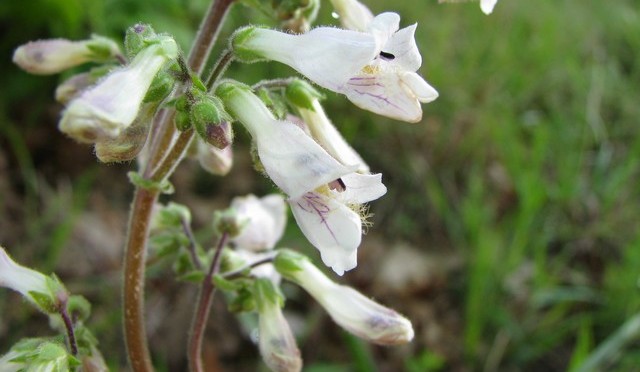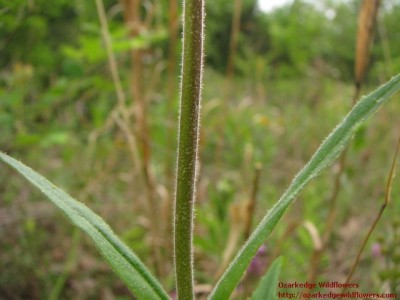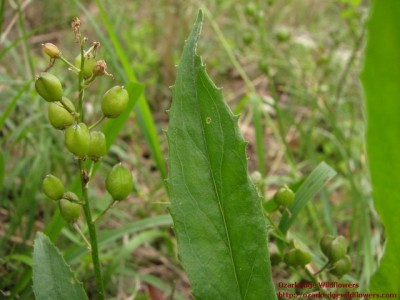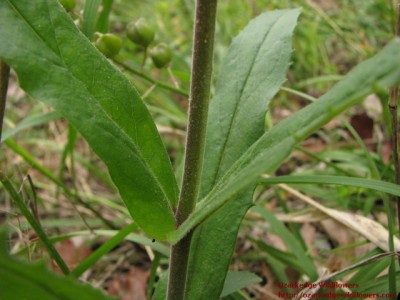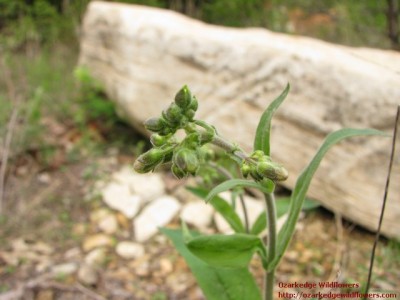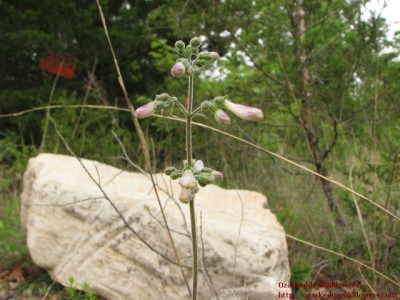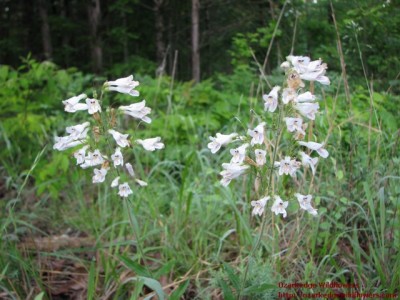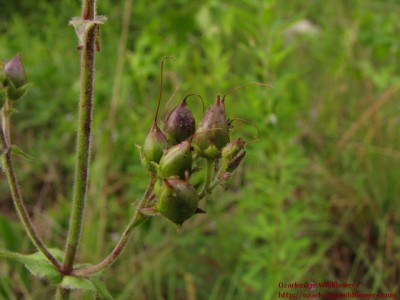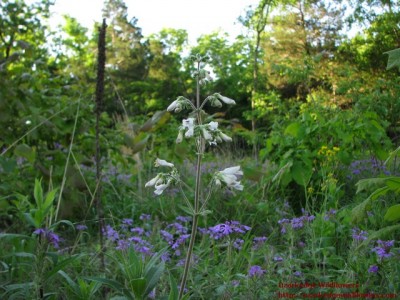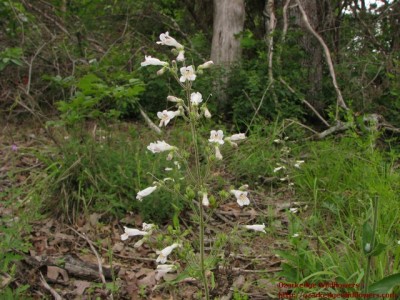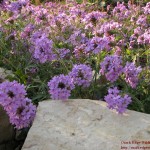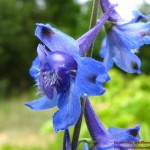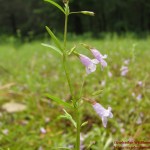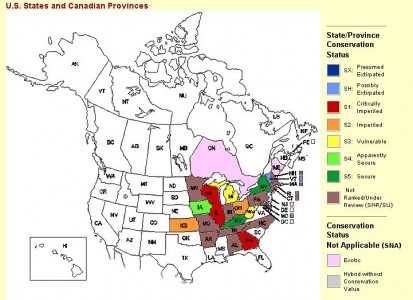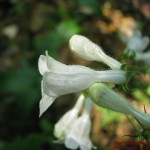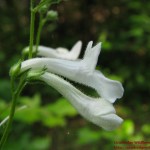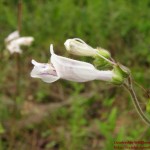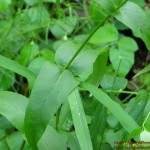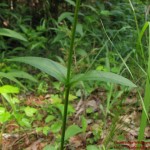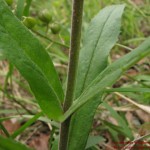Pentestemon pallidus is one of three white penstemons growing on Ozarkedge. His close cousins- Pentemon digitalis and Penstemon tubaeflorus- are showier, with larger flowers and a more vigorous appearance. Nevertheless, Penstemon pallidus is a an appealing wildflower. He makes up for being less showy by being present in greater number, flowering earlier and thriving in a harsh habitat. There’s a lot to be said for that.
Latin Name/Common Name- The word “penstemon” is derived from the Greek words ‘pente” meaning five and ‘stemon’ meaning thread- which is taken to mean stamen.
The common name, Pale beardtongue, refers to the pale flowers and perhaps the pale green of the leaves and stem. Penstemons in general are referred to as Beardtongues because of the bristly hairs on the stamen.
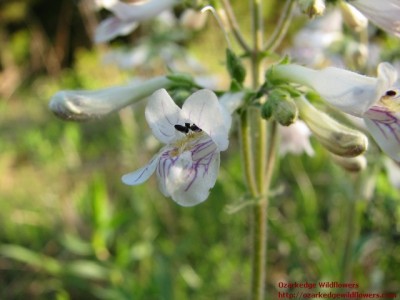 Bristly hairs form a ‘beard’ on the stamen
Bristly hairs form a ‘beard’ on the stamen
Description
Penstemon pallidus is downy all over. The stem is densely hairy. The pubescent leaves are opposite and partially clasp the stem. They are lanceolate and often toothed.
Pubescent stem
Lanceolate leaf with teeth (the seedpods on the left are from Camassia scilloides or Wild hyacinth)
Buds are tinged with pink before opening
Faded flowers alongside new blossoms
Purple seed pods will mature to crisp brown
Bloom Time- The month of May is the time to find Pale beardtongue in bloom on Ozarkedge.
Pale beardtongue blooming in mid May with Glandularia canadensis
Habitat- This plant is happy in dry rocky glades, and woodland edges.
Habitat in glade at woodland edge
What’s Growing Nearby?
You might find Matelea decipiens sharing both habitat and bloom time with Penstemon pallidus. Other wildflowers on Ozarkedge that share the same habitat and bloom time are Glandularia canadensis, Delphinium carolinianum and Calamintha arkansana.
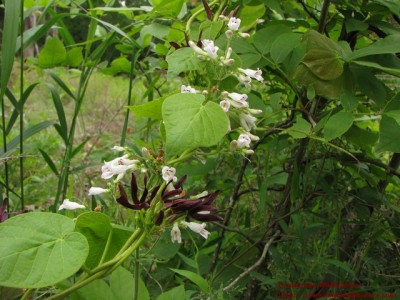
Matelea decipiens clamboring up the 3 foot stalk of Penstemon pallidus
From left to right: Glandularia canadiensis, Delphinum carolinianum, Calamintha arkansana
Endangered List
Penstemon pallidus is struggling for survival across many states. The USDA plant site lists it as Endangered in Illinois and Threatened in Ohio. You can access this information here. Select the Legal Status tab to see the endangered status.
Natureserve shows an even more precarious state for this lovely wildflower, listing it as Critically Imperiled in Georgia, Illinois, Georgia and Wisconsin along with Imperiled in Ohio and Kansas and Vulnerable in Michigan and West Virginia.. It is possibly Extirpated in Vermont. The status in Arkansas and 10 other states is not ranked. You can access this information here.
Interesting Tidbits- It’s easy to confuse the three white penstemons. They can be easily distinguised by looking at the shape of the flower, leaf and hairiness of the stem. Take a look below.
Left column is Penstemon digitalis, Center column is Penstemon tubaeflorus and Right column is Penstemon pallidus.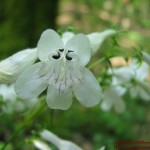
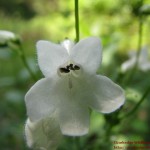
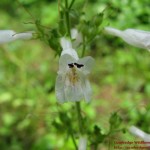
Note the corolla of Penstemon tubaeflorus is more funnel shaped, whereas those of Penstemon digitalis and Penstemon pallidus are more narrow at the base and bulge outward toward the flower tip. The face of Penstemon tubaeflorus is more flattened and it is pure white. Penstemon pallidus often has a pink tinge, especially in bud. The stem and leaves of Penstemon pallidus have a fuzzy appearance due to dense pubescence, whereas the stem and leaves of the other two are more glabrous with only a few tiny hairs.
